- Home
- slideshows
- miscellaneous
- I toured one of Kentucky's most legendary horse farms, where horses live in immaculate barns, security teams sweep the grounds at night, and Secretariat is buried. Here's what it looks like.
I toured one of Kentucky's most legendary horse farms, where horses live in immaculate barns, security teams sweep the grounds at night, and Secretariat is buried. Here's what it looks like.
Lexington, Kentucky and its surroundings are known as the "horse capital of the world."

One of the Lexington area's most prestigious horse farms is Claiborne Farm, a 109-year-old thoroughbred farm in the town of Paris, about 20 miles from Lexington.
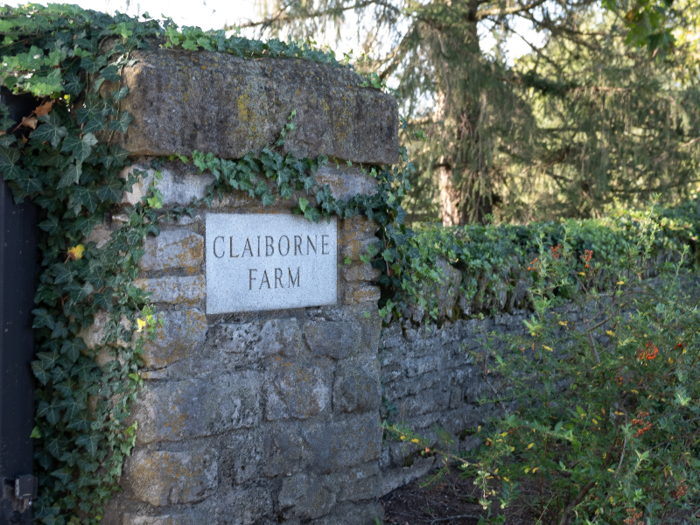
The farm was established in 1910 by the Hancock family, who still control the farm today.
Walker Hancock has been running the farm since 2014 after taking over from his father, Seth Hancock.
On a recent September morning, I drove out to Claiborne from Lexington. The road took me through bucolic farmland.
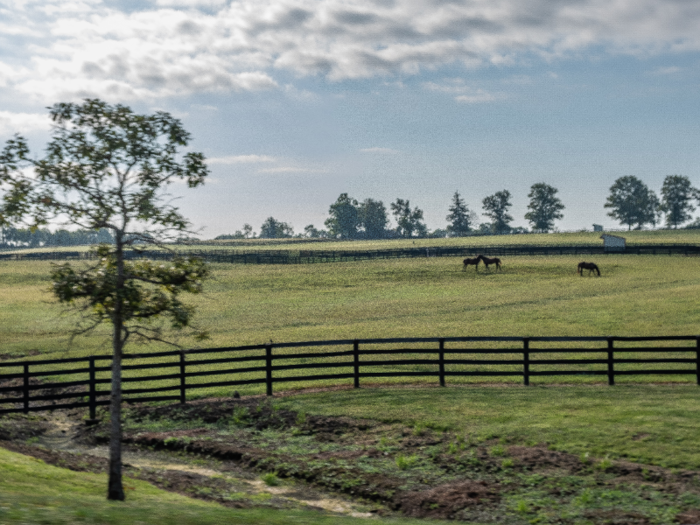
The morning sunlight shining through the mist hovering over the grass gave the countryside a tranquil glow. I saw horses grazing and occasionally, tucked away in the hills, a stately home with white columns.
I rolled down the car window and was struck by the smell freshly cut grass ... and manure.
I got to Claiborne Farm at about 9:45 a.m. and made my way down a long driveway lined with tall trees.
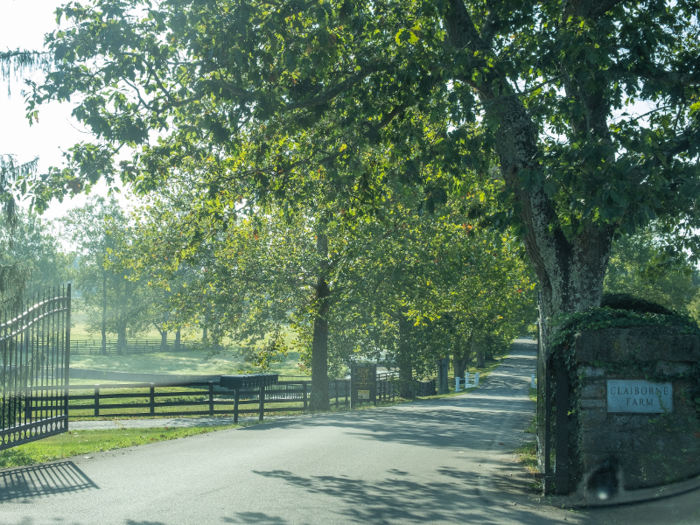
Mist was still rising off the grass, but the air was already warm.
Claiborne Farm has been home to some of the most legendary racehorses in history, including Secretariat, whose 1973 Belmont Stakes victory is often still considered one f the greatest achievements in the history of horse racing.
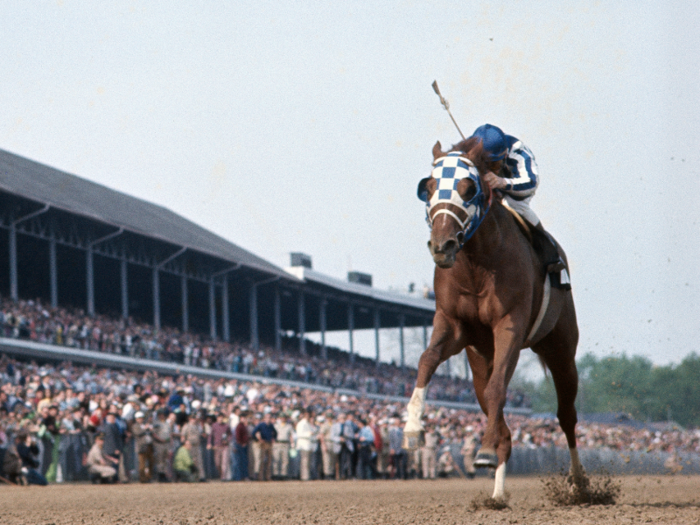
"Riding [Secretariat] was like flying a fighter jet compared to an ordinary airplane," Secretariat's jockey, Ron Turcotte, now 77, told Aly Vance for CNN's Winning Post.
Including Secretariat, 54 horses who called Claiborne home have been inducted into the Racing Hall of Fame.
John, our Claiborne tour guide, described the farm as "sacred ground in American Thoroughbred breeding industry."
Seabiscuit, the underdog racehorse who became a beloved champion, grew up and was trained at Claiborne Farm.
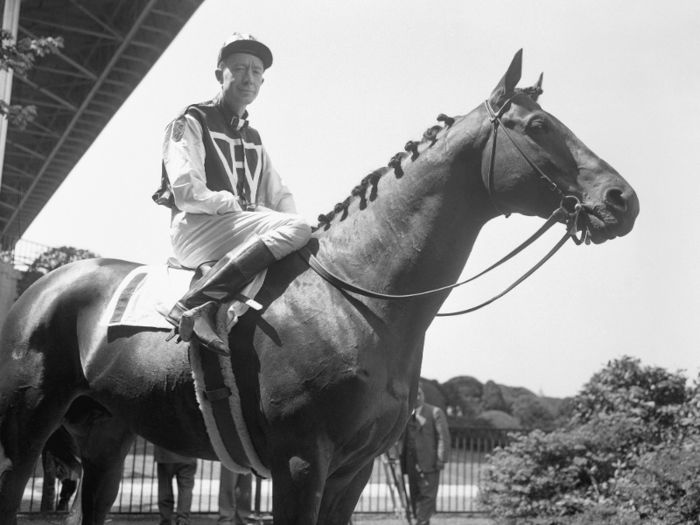
Seabiscuit, smaller than the average racehorse with chunky legs and an awkward gait, wasn't originally a promising contender. His first trainer said the horse was "lazy."
But after he came under the care of a new owner, trainer, and jockey, Seabiscuit started winning major races.
In 1938, he went on to beat the fan-favorite War Admiral, a Triple Crown winner, in what ended up being called the "Race of the Century."
Seabiscuit was inducted into the Racing Hall of Fame in 1958.
Upon arriving at the farm, I parked my rental car and followed the directions to the Visitors Center. Claiborne Farm offers guided tours that start at $20 and can cost upwards of $600.
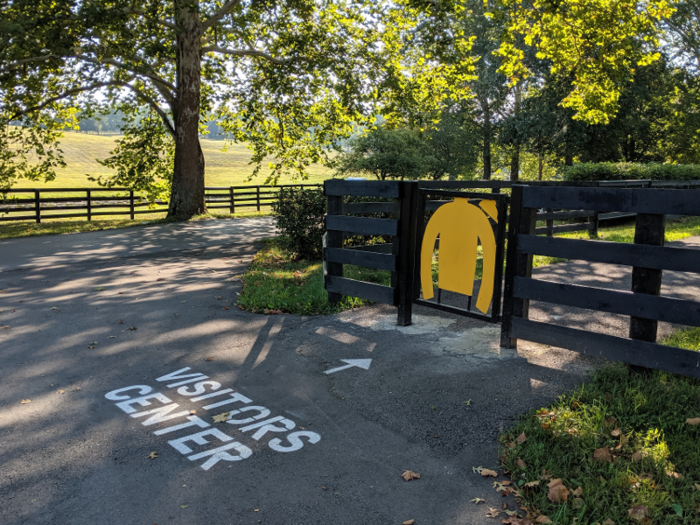
I booked the basic $20 stallion complex tour, which includes a walk through the thoroughbred breeding area, the stallion barns, and the cemetery. The tour is conducted in small groups and takes about an hour.
Then there's the all-farm shuttle tour for $30, which lasts an hour and a half and transports guests around the 3,000-acre farm, including the foaling barn, vet barn, training track, sales prep facilities, maintenance division, and nursery. This tour does not include the stallion complex.
A separate $40 tour allows guests to meet one of the farm's star breeding mares and her foal.
And for those who want a more private experience, the farm offers a private version of the stallion tour for small groups that starts at $600.
The farm has a small visitors center with bathrooms and a gift shop.
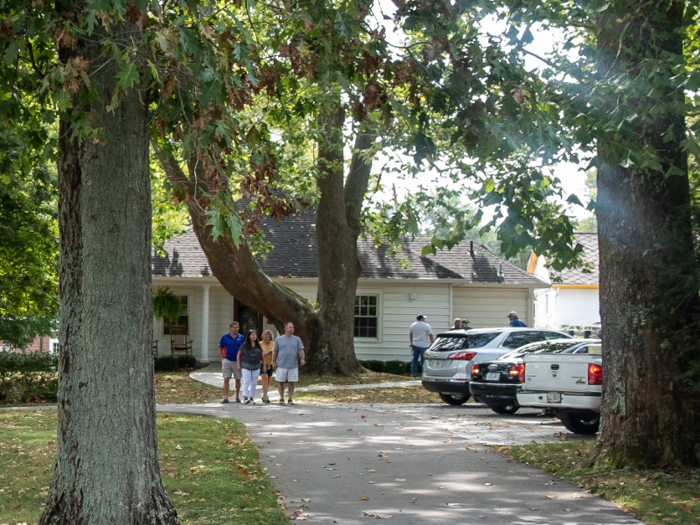
The shop sells t-shirts and various horse-themed memorabilia and gifts.
Claiborne Farm, which sits on more than 3,000 acres, has about 20 miles of roads and driveways, 50 barns, and 100 miles of fences.
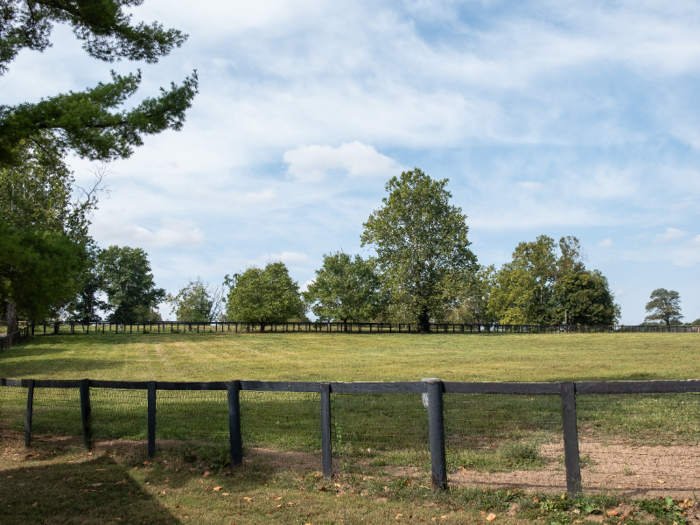
Self-filling water troughs are scattered throughout the pastures on the farms.
When Secretariat lived at Claiborne, the farm reportedly had to install a wooden privacy fence along the road because fans were trying to reach over the fence to touch him, and a few even climbed over.
There are about 24 houses on the property that are mainly occupied by employees, according to John, my tour guide.
At night, a watch crew patrols the farm with a security detail to ensure the safety of the horses.
Our first stop on the tour was the breeding shed, part of Claiborne's stallion complex.
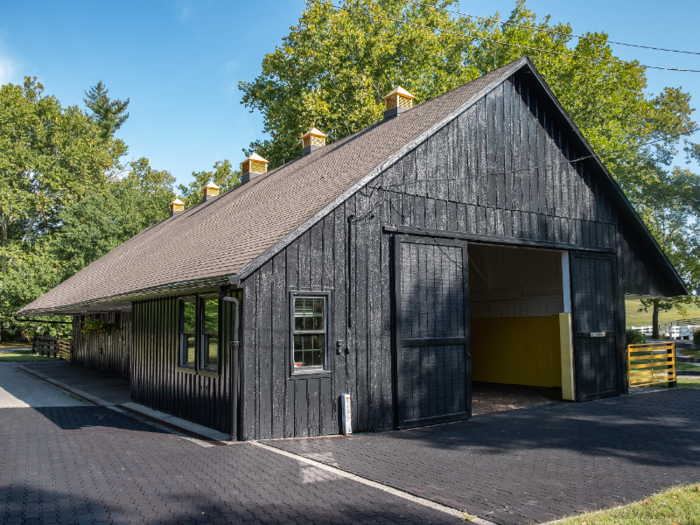
The path leading to the breeding shed is made of rubber to prevent any slips from excited stallions.
There were 10 stallions at Claiborne at the time of my visit — all Kentucky bred — seven of which were born on the farm, John told our tour group.
It's the mares that make up most of the horse population on the farm, though. There were about 240 mares on the farm at the time of my visit in early September — and 201 of them were pregnant.
The horse breeding industry is a huge money-maker for farms like Claiborne.
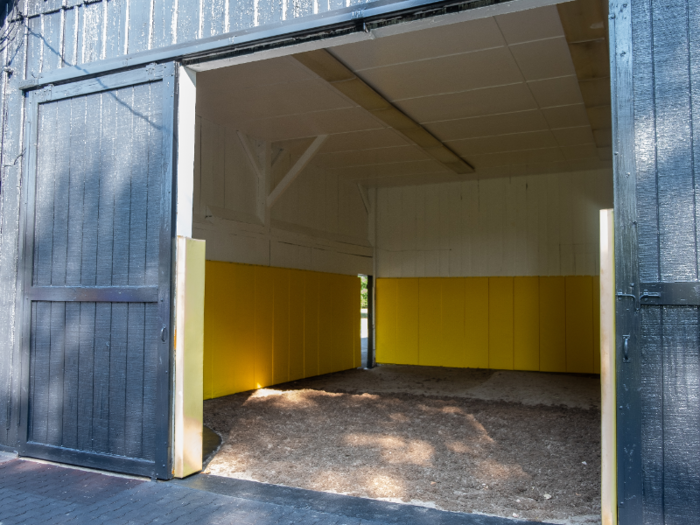
To breed with a stallion, the farm charges a stud fee that can change each year. At Claiborne, the 2019 fees ranged from $2,500 to $250,000 for their most prized stallion.
During this year's breeding season, from about the second week of February to early July, Claiborne Farm's stallions bred with 754 mares. Some stallions breed three times a day: at 8 a.m., 3 p.m., and 7 p.m.
John described it as a "very efficient process," as up to 10 mares can be bred every hour.
At least four humans are present for each breeding process: one to handle the stallion, one to hold the mare, and two others to hold the mare's tail to the side and assist in any other way they're needed. Each breeding is video recorded for liability reasons.
The floor of the breeding shed is made of a special polytrap material that prevents horses' hooves from slipping and avoids injuries during the breeding process.
"Some of our top stallions are worth tens of millions," John said. "Some mares are worth millions. So we try to keep our horses safe."
The barns where the stallions live at Claiborne are painted bright white with yellow-gold trim and shingled roofs.
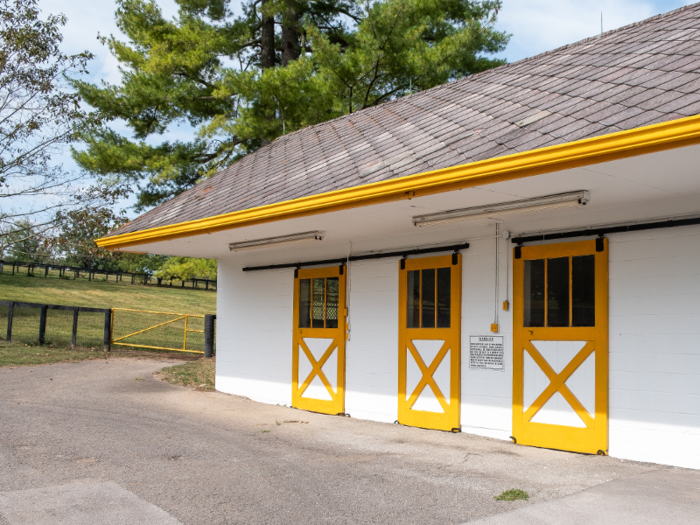
While the stallions each have their own stall in the barn, they also get plenty of time out at pasture.
The stallions are taken out to pasture individually in their own pens, because otherwise they will fight, John told us. The mares and foals, however, go out to pasture in groups.
Our group headed over to the first barn, eager to meet some of Claiborne's prized stallions.
The first stallion John brought out was a 7-year-old former racehorse named Runhappy. The stallion is about 1,400 pounds and bred with 125 mares this year.
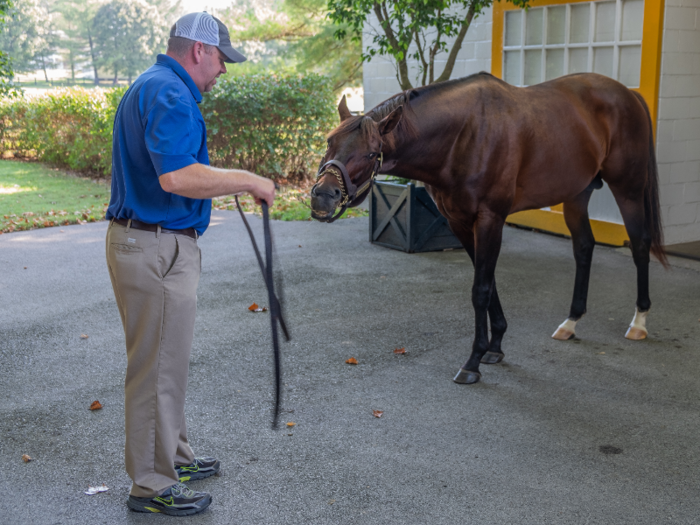
Runhappy was playful and energetic, bobbing his head around and frequently attempting to nibble on various parts of John.
He won the Breeders' Cup Sprint at Keeneland when he was 3 years old and had several other wins. Now, he makes the farm $25,000 each time he breeds with a mare.
With the 125 mares he bred with in 2019, that adds up to more than $3 million from a single breeding season. And Runhappy is far from the most expensive stallion at the farm.
Each member of the tour group got the chance to approach Runhappy and stroke his shoulder.
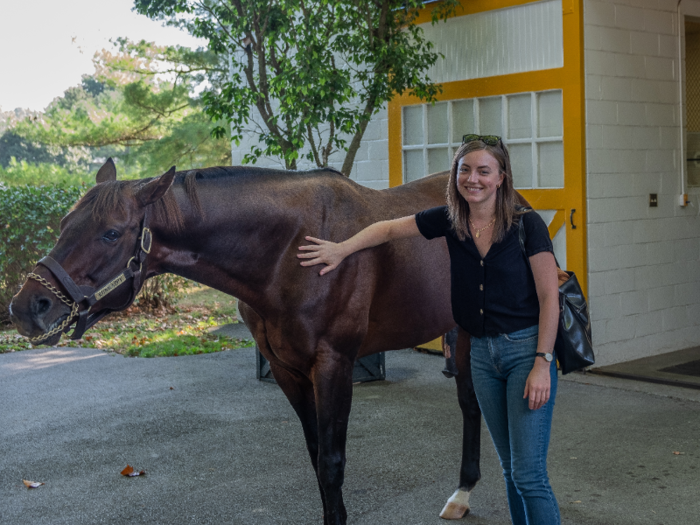
John warned us not to pet up near their faces because thoroughbred stallions like to bite, which made a few members of the group noticeably nervous. Since I grew up around horses and John clearly had a firm grip on the stallions' lead, I was more than happy to give the stallion a pat.
Still, almost every single person in the group ended up giving Runhappy a pet and posing for photos before John led him back into his stall.
Inside the barn, we said hello to Orb, the Kentucky Derby winner in 2013.
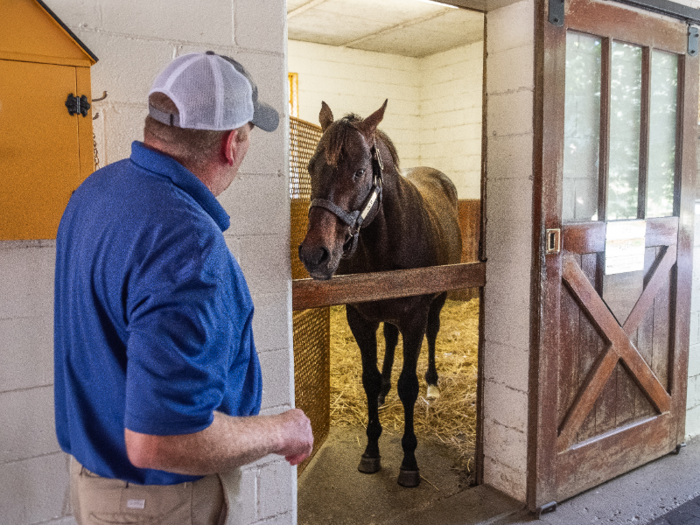
According to John, Orb is a troublemaker. The farm employees joke that he's the "most likely to bite his groom."
Orb was a big and burly horse, with a physique similar to Secretariat, John said.
The inside of the stallion barns was immaculate.
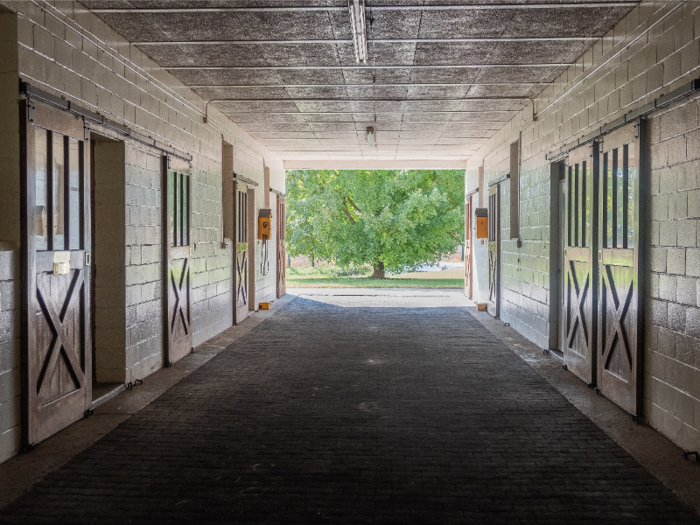
I expected the barns to be smelly, but I could only detect the slightest scent of manure.
The barns even had what can only be described as horse-specific amenities.
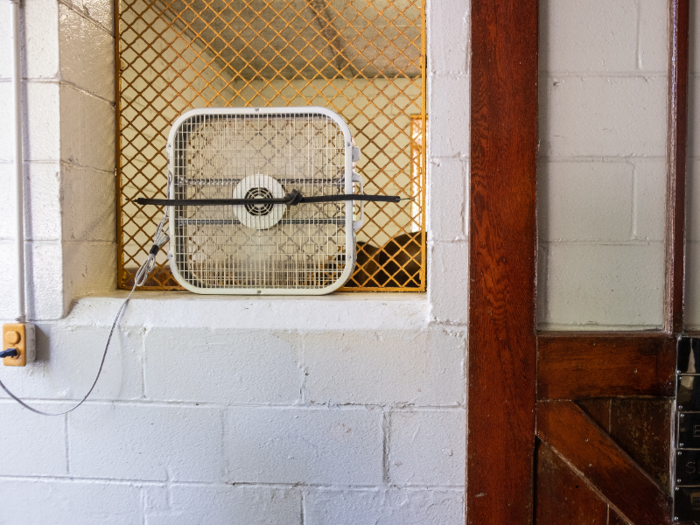
Each horse has its own fan circulating cool air in the stall.
And to protect the horses from biting flies, the stallion barns have an automated spray system that mists fly spray every 30 minutes.
And in addition to the grain and water buckets, each horse has its own salt block to lick in its stall.
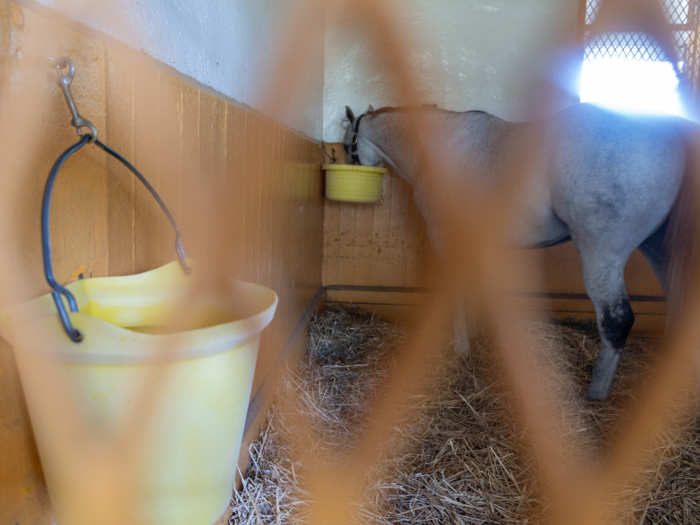
The floors of the stalls are covered by clean straw.
Shiny golden placards on the stalls denote the name of each stallion.
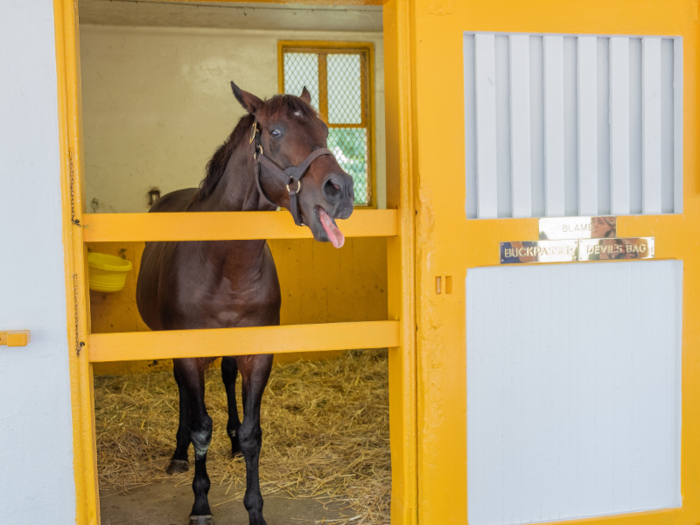
The stallions had a lot of personality, and they were eager to be fed the peppermints that John pulled out of his pockets and allowed us to offer up to the horses.
Toward the end of the tour, we got to meet Claiborne's most precious and expensive stallion: War Front. Each time War Front successfully breeds with a mare, the farm makes $250,000.
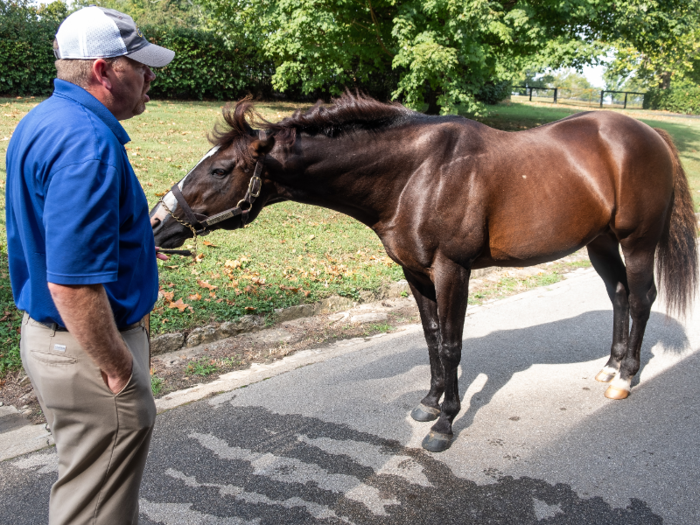
As a racehorse, War Front made $425,000 in career earnings.
But as a breeding stallion, he's worth millions.
This year, War Front bred with 81 mares and brought in $10 million in revenue for the farm.
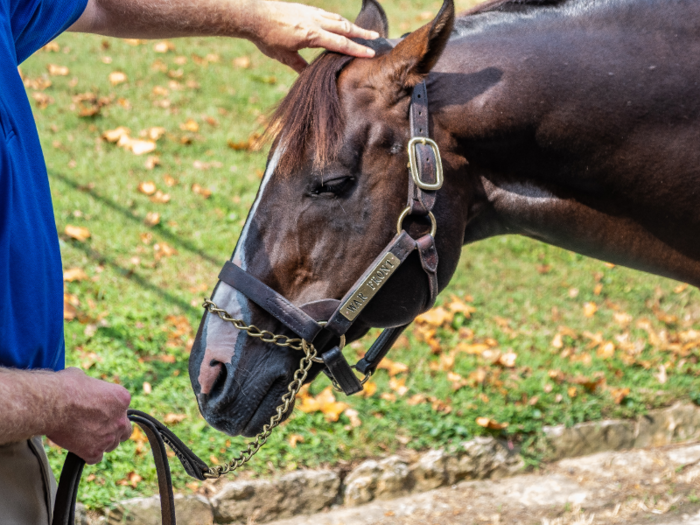
Most of Claiborne's stallions are owned by multiple shareholders. John told us that a share in War Front is worth about $2 million — and there are 40 shareholders.
Mares come from all over the world to breed with him — from France, England, Ireland, Dubai, John said.
A stallion can keep breeding as long as he's physically capable. After he retires, he lives out the rest of his life in peace on the farm.
In a small, simple cemetery behind the farm office, 22 of Claiborne's most legendary horses are buried, including five Kentucky Derby winners.
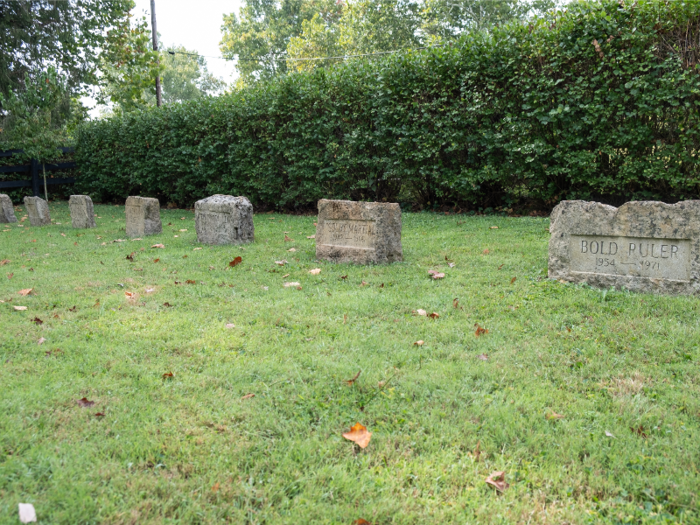
In the horse racing industry, the tradition is to bury only the hooves, heart, and head of the horse.
But for some special thoroughbreds, they make an exception.
Secretariat, considered one of the greatest racehorses to ever live, was buried at Claiborne in his entirety.
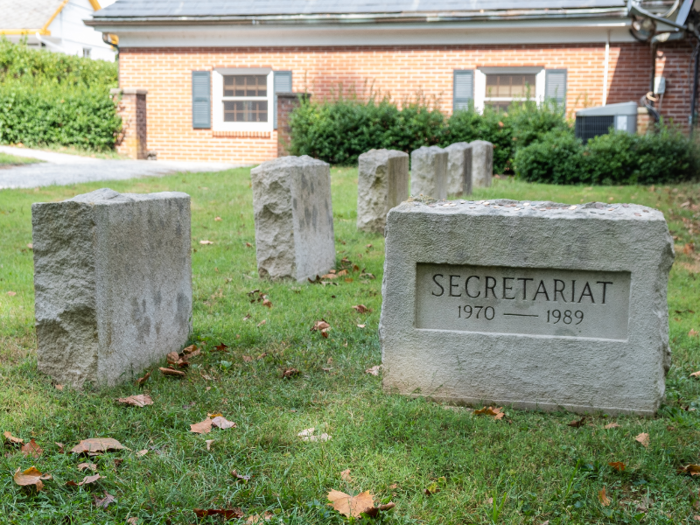
Secretariat was buried whole in a six-foot by six-foot oak casket lined with orange silk, the color used by Claiborne's racing stables, according to The Los Angeles Times.
After my tour of Claiborne, I was blown away by the attention and effort that goes into caring for thoroughbreds — and the money made from breeding them.
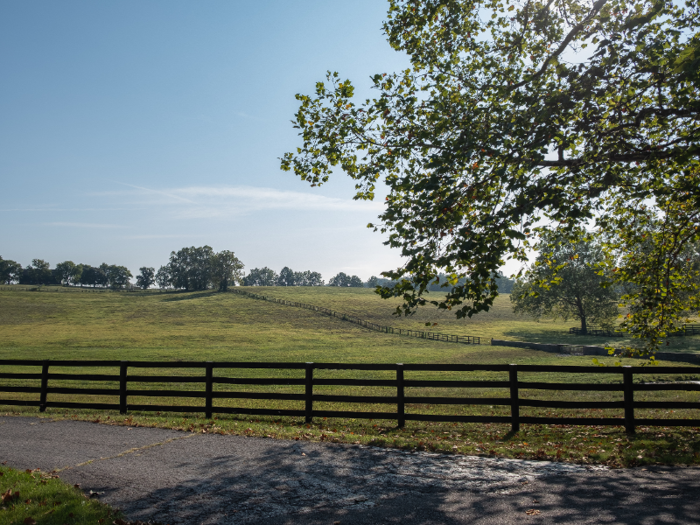
From the barns with fans and automated fly spray systems to the security detail that sweeps the farm at night, it was clear that horse farms go all-out to care for and protect their greatest assets.
I'd always assumed that the real money in the horse industry came from racing. But after learning that a single stallion can earn a farm $10 million in less than a five-month period, I saw just how lucrative an industry thoroughbred breeding is in itself.
My only regret was that I didn't get to see more of the farm.
I'd only seen a tiny part of it — the stallion complex and the cemetery. I didn't get a glimpse of any mares, foals, or the farm's 48 other barns.
In hindsight, I think the best option would have been to take the all-shuttle farm tour in combination with the stallion complex tour I booked. But at a combined 2.5 hours, that would've been trickier to fit into my schedule.
Popular Right Now
Popular Keywords
Advertisement